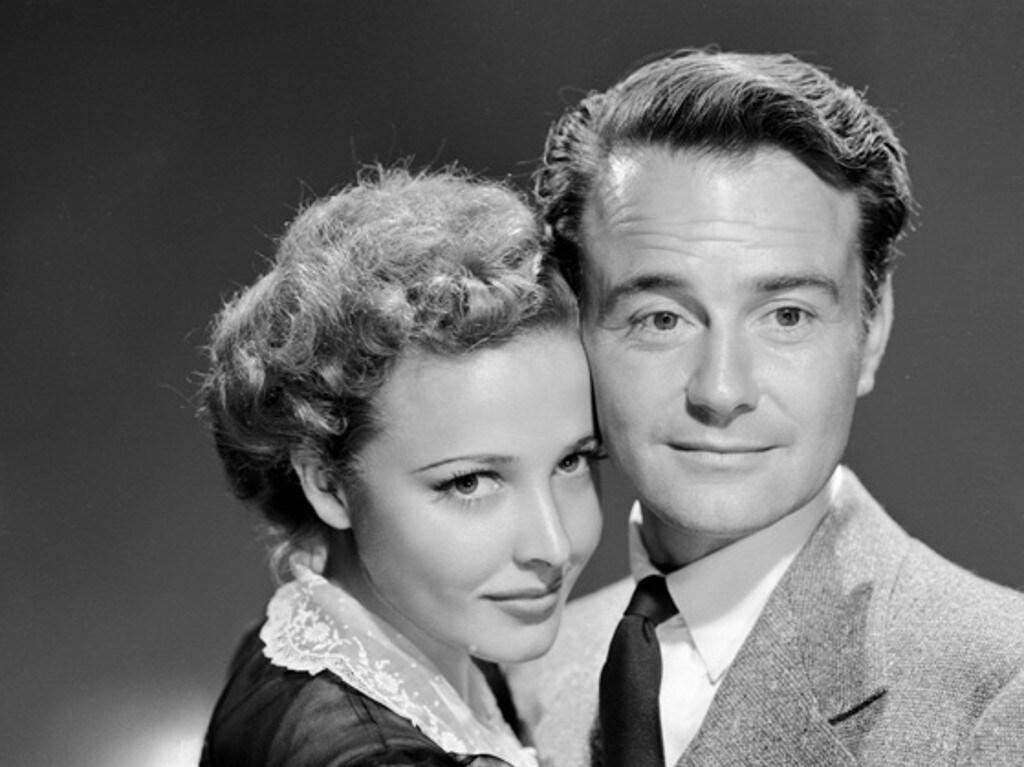Dr. Kildare's Wedding Day

Brief Synopsis
Cast & Crew
Harold S. Bucquet
Lew Ayres
Lionel Barrymore
Laraine Day
Red Skelton
Alma Kruger
Film Details
Technical Specs

Synopsis
Staff members at New York's Blair General Hospital happily prepare for the marriage of resident doctor James Kildare to nurse Mary Lamont. Dr. Leonard Gillespie, Jimmy's wheelchair-bound mentor, is happy for his protégé, but at loose ends because the marriage will mean that Jimmy will have less time to spend with him. Trying to find something to do, Gillespie goes to a concert and observes that the conductor, maestro Constanzo Labardi seems to be faltering. When a mutual friend introduces Gillespie to the conductor, Gillespie suggests that the maestro see a doctor. The next day, Labardi goes to see Gillespie and confesses that he is going deaf, but no one knows his secret. Hoping to cure Labardi, Gillespie, who may have cancer, refuses to accompany cancer specialist Dr. Lockberg to his clinic. While Jimmy and Mary attend a wedding rehearsal at his parents' home in Connecticut, Dr. Lockberg calls Jimmy and asks him to use his influence on Gillespie. Jimmy returns to Blair and convinces Gillespie to go to Lockberg's clinic by threatening not to take his own honeymoon. For the next few days, while Jimmy works with Gillespie on the Labardi case, Mary makes wedding preparations at the Kildares' home. Jimmy is still too busy to attend his bachelor dinner, so Mary, who does not want to disappoint his friends, decides to go in his place. On the way to the restaurant, as she daydreams about her marriage, she accidentally walks into the street and is run over by a truck. When Jimmy arrives at the hospital, he is told about Mary and rushes to her room moments before she dies. One month later, Gillespie is is ready to leave Lockberg's clinic and receives a call from Jimmy's father, Dr. Stephen Kildare, who tells him that Jimmy has not returned to Blair and has fallen apart after Mary's death. Gillespie asks him to relay a message to Jimmy to meet him so that they can talk about Labardi. At Gillespie's childhood home, he tells Jimmy the story of a composer named Cornelia, whom he loved many years ago, before her death. Dr. Walter Reed, the physician who discovered a cure for yellow fever, inspired Gillespie to go on with his career instead of living only for his grief. Jimmy still thinks that he cannot continue, but he agrees to come back to Blair for one week to help cure Labardi. Jimmy soon discovers that Labardi's hearing problems are caused by a Vitamin B1 deficiency, and after injections of the vitamin, the conductor is able to perform a symphony written by Cornelia on the first of his planned series of radio broadcasts intended to bring great music to the common man. After the concert, Jimmy finally realizes that he must return to medicine.

Director

Harold S. Bucquet
Cast

Lew Ayres

Lionel Barrymore

Laraine Day

Red Skelton
Alma Kruger

Samuel S. Hinds

Nils Asther

Walter Kingsford
Emma Dunn

Miles Mander
Nell Craig

Frank Orth
George H. Reed

Marie Blake
Margaret Seddon

Pierre Watkin

Ann Doran

Fay Mckenzie
Catherine Lewis
Ralph Byrd
Horace Macmahon

Halliwell Hobbes

Eddie Acuff
Gladys Blake
Joe Devlin

Olive Blakeney
Gus Schilling
Charles Williams
John T. Murray
Johnnie Morris
Otto Hoffman
Tim Ryan
Duke York
Jackie Horner
Betty Farrington
Tom Stevenson

Grace Stafford
Robert Emmett Keane
Selmer Jackson

Connie Gilchrist
Johnnie Berkes
Bill Chaney
Ernie Adams
Billy Mcclain
Chester Clute
Mitchell Ingraham

Charles Irwin

Lew Kelly
Crew
Lawrence P. Bachmann
Lionel Barrymore
Jerry Bresler
Malcolm Brown
Jack Dawn
George Folsey
Cedric Gibbons
Willis Goldbeck
Kalloch
Bronislau Kaper
Conrad A. Nervig
Harry Ruskin
Ormond Ruthven
Douglas Shearer
Edwin B. Willis
Dolph Zimmer

Film Details
Technical Specs

Articles
Dr. Kildare's Wedding Day -
By Violet LeVoit

Dr. Kildare's Wedding Day -
Quotes
Trivia
Several actors with their character names listed in studio records and/or casting call lists were not seen in the movie. These were Fay Holden (Mrs. Bartlett, replaced by Margaret Seddon),Joe Devlin (Clancy), Charles Williams (Pickins), Bill Chaney (Boy on Horse), Billy McClain (Joseph), Chester Clute (Ainsworth Lee), Tom Stevenson (Mr. Richards) and Grace Stafford (Mrs. Richards). The latter two were in the sequel "Dr. Kildare's Victory".
Notes
The "Tableau Rose (Cornelia's Symphony)" played in the film was written by series co-star Lionel Barrymore, who wrote several classical compositions that were performed by symphony orchestras. This was the last of the Dr. Kildare series to feature Laraine Day in the role of "Nurse Mary Lamont." According to reviews and news items, M-G-M decided to write Day out of the series because her career was advancing and the studio wished to have her free to do other films. A Hollywood Reporter news item in March 1941 noted that Ormond Ruthven, who is credited onscreen as one of four screenwriters, was a member of M-G-M's recorded sound department, and had just sold "an original" to the studio for their next Dr. Kildare picture.
Red Skelton made his second and last appearance in the series as orderly "Vernon Briggs." Skelton also went on to starring roles at M-G-M after leaving the series. Actor Nils Asther, who had been under contract to M-G-M in the 1920s and early 1930s, returned to the studio for the first time in seven years, according to publicity materials. For additional information on the Dr. Kildare series, consult the Series Index and see the entry for Young Dr. Kildare (AFI Catalog of Feature Films, 1931-40; F3.5251).















